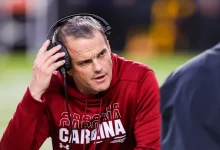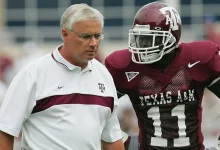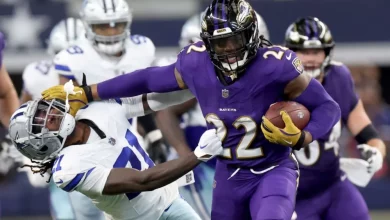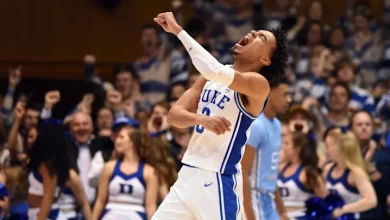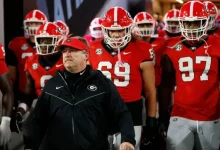A substantial NIL deal could potentially influence a recruit to choose a different college over Ohio State football, as lucrative endorsement opportunities may sway their decision away from the Buckeyes.
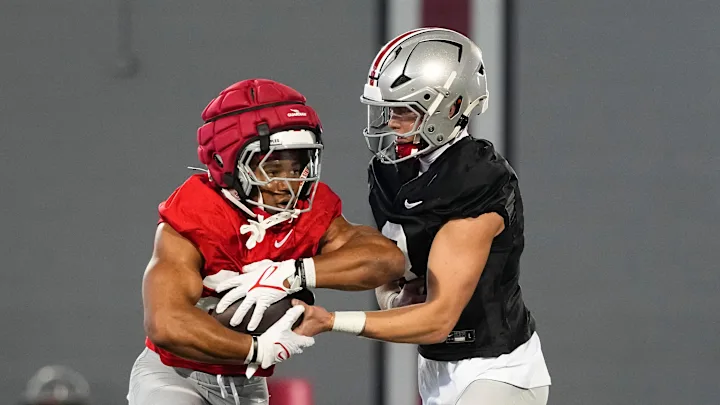
The landscape of college athletics has undergone a seismic shift with the advent of NIL (Name, Image, Likeness) rights, fundamentally altering how student-athletes are recruited, compensated, and motivated. Historically, college football recruitment centered primarily around athletic performance, coaching staff, team culture, and academic opportunities. However, with the emergence of lucrative NIL deals, the calculus has expanded to include potential endorsement earnings, sponsorship opportunities, and brand-building prospects. This evolution can significantly influence a recruit’s college choice, especially when faced with substantial NIL offers that may sway decision-making. Notably, programs like Ohio State, renowned for their football excellence and storied tradition, now compete in an environment where NIL opportunities can sometimes tip the scales in favor of other schools, leading recruits to consider options beyond the Buckeyes. This essay explores how a substantial NIL offer might influence a recruit’s decision-making process, the factors involved, and the implications for Ohio State and college football at large.
The Rise of NIL in College Sports
NIL rights became a legal reality for college athletes in July 2021, following the NCAA’s decision to lift restrictions on athletes earning compensation from their personal brand. This shift was driven by mounting pressure from legislative bodies, athlete advocacy groups, and the realization that student-athletes contribute significantly to university revenues and brand value. NIL allows athletes to monetize their fame, social media presence, and personal brand through endorsement deals, appearances, merchandise sales, and other ventures.
The impact of NIL on recruitment is profound. Prospective student-athletes now evaluate schools not only for athletic facilities, coaching staff, and academic programs but also for the NIL opportunities available. The potential to generate income has become a crucial component of recruitment conversations, especially for highly sought-after recruits who can leverage their talent into endorsement deals. Consequently, NIL has introduced a new competitive dimension, where schools and booster networks actively craft NIL packages to attract top talent.
NIL and Recruitment Strategies
Colleges have responded by developing sophisticated NIL strategies, including forming relationships with local businesses, alumni, and booster organizations to create endorsement opportunities. Some programs have established official NIL collectives—funds or organizations that facilitate athlete endorsements—aimed at incentivizing recruits and current players. These collectives can sometimes offer sizeable financial packages designed explicitly to sway recruits during the recruitment process.
For recruits, the decision-making process now often involves evaluating the NIL landscape at each school. They consider factors such as:
Availability of endorsement opportunities: Does the school or its boosters have a track record of facilitating deals for athletes?
Potential earnings: Are there significant NIL offers or the promise of lucrative endorsement deals?
Social media and branding support: Does the program have a strong platform or network that can help athletes grow their personal brand?
Marketability: Is the school located in a media-rich environment that can boost an athlete’s visibility?
The allure of a substantial NIL offer can sometimes overshadow traditional considerations, such as a program’s historical success or coaching staff.
Case Study: Ohio State’s NIL Environment
Ohio State University, with its rich football tradition, large media market, and extensive alumni network, has historically been a premier destination for recruits. The Buckeyes’ strong brand, combined with their competitive success, makes them appealing for athletes seeking national exposure. However, in the NIL era, Ohio State’s attractiveness now also depends heavily on the NIL ecosystem surrounding the program.
While Ohio State has made strides in establishing NIL partnerships and supporting athlete branding, it may not always be able to match the NIL offers that emerging programs or schools with aggressive NIL collectives can provide. Some programs in the SEC, for example, have cultivated particularly robust NIL networks, offering recruits the prospect of immediate endorsement deals or lucrative opportunities through regional or national brands.
Thus, a recruit considering Ohio State might also evaluate whether the NIL opportunities there are as compelling as those offered elsewhere. If a rival school presents a significantly larger NIL package—either through direct endorsement offers or via its booster network—the recruit might view their prospects at Ohio State as less advantageous, despite the program’s athletic prestige.
The Power of Substantial NIL Offers
When a recruit receives a substantial NIL offer—potentially worth hundreds of thousands of dollars or more—the decision to commit can become complex. Such offers can be particularly influential for several reasons:
Financial Security and Career Planning: Athletes who see immediate financial benefits may prioritize programs that maximize NIL earnings, viewing college as a platform to build their brand and income streams.
Brand Growth and Marketability: Recruits with high social media followings or entrepreneurial ambitions may be enticed by schools offering superior branding support or endorsement opportunities.
Perception of Value and Recognition: A large NIL offer can signal that a school highly values the athlete, providing a sense of importance and recognition that influences their decision.
Competitive Environment: Athletes may also compare the NIL potential between programs, choosing the one with the most promising endorsement landscape, even if other aspects of the program differ.
This influence is especially pronounced among recruits at the cusp of stardom—those with high visibility or social media influence—who can leverage NIL deals to supplement their athletic pursuits and prepare for a post-college career.
Ohio State’s Challenges in Retaining Top Recruits
Despite its prestige, Ohio State may face challenges in retaining top recruits if other programs offer significantly larger NIL packages. Some reasons include:
Market Size and Media Presence: Schools in media markets with a broader national reach may facilitate higher endorsement earnings.
Regional NIL Networks: Schools with well-established NIL collectives or relationships with major brands can provide more lucrative deals.
Brand Alignment: If a recruit’s personal brand aligns better with another school’s NIL ecosystem, they may favor that environment.
Perceived Opportunity for Earnings: Recruits may prioritize the potential for endorsement deals over traditional factors like playing time or coaching staff.
If a recruit perceives that their NIL income potential is higher elsewhere, they might opt for that program, even if Ohio State offers a more traditional path of athletic success and academic excellence.
Broader Implications for Ohio State and College Football
The influence of substantial NIL offers on recruitment decisions has broad implications:
Recruiting Competition: Schools now compete not just on athletic facilities and coaching staff but also on NIL opportunities, leading to more complex recruitment battles.
Program Development: Ohio State and similar programs must develop or enhance their NIL infrastructure, including partnerships and collectives, to stay competitive.
Equalizing Opportunities: Schools in regions with less media exposure or fewer NIL resources risk losing top recruits to programs that can offer more lucrative deals.
Impact on Team Dynamics: High NIL earnings might influence athlete motivation, team cohesion, and the overall culture within programs.
Legal and Ethical Considerations: As NIL becomes a central recruiting factor, questions about fairness, compliance, and the influence of money on amateur sports intensify.
Potential Strategies for Ohio State
To mitigate the risk of losing recruits due to NIL offers, Ohio State might consider several strategies:
Enhance NIL Partnerships: Develop relationships with local and national brands to create compelling endorsement packages for athletes.
Promote Success Stories: Showcase current athletes’ NIL earnings and branding opportunities to demonstrate the program’s potential.
Offer NIL Education and Support: Provide resources to help recruits understand and maximize NIL opportunities.
Leverage Alumni and Booster Networks: Engage alumni to support NIL initiatives that benefit incoming athletes.
Maintain a Strong Athletic Program: Continue competing at a high level to attract recruits based on athletic success, supplemented by NIL opportunities.
The advent of NIL rights has transformed college football recruiting, making endorsement potential a significant factor in a recruit’s decision-making process. A substantial NIL offer can sway a talented athlete away from Ohio State, even amidst its storied tradition and athletic excellence. For Ohio State, and other elite programs, adapting to this new environment requires strategic development of NIL partnerships, athlete branding support, and an understanding of evolving recruit priorities. Ultimately, while athletic success remains vital, the allure of lucrative NIL opportunities introduces new dynamics that could reshape college football’s competitive landscape, challenging programs to innovate and align their recruiting strategies accordingly. As the NIL era unfolds, the balance between athletic ambition, personal brand development, and financial incentives will continue to influence the choices of the next generation of college football stars.

